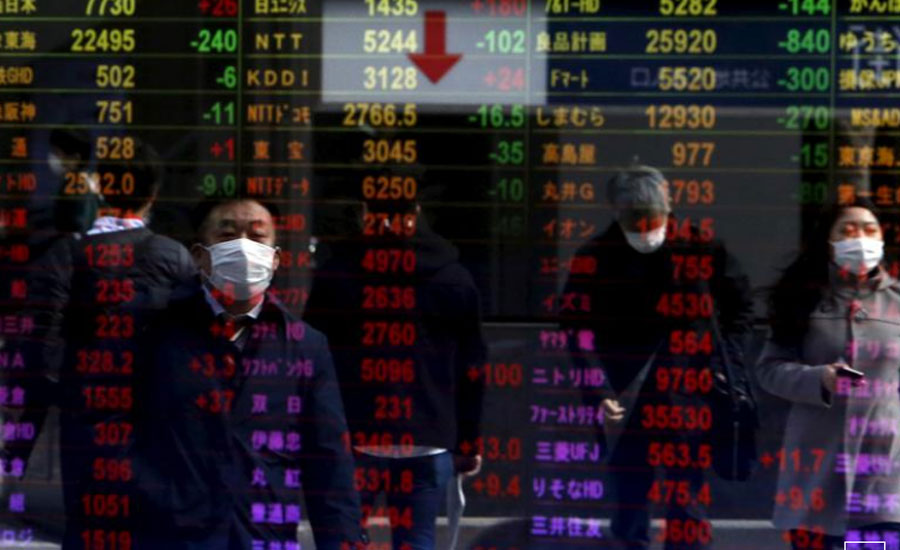Asian markets roiled as bond rout turns 'lethal'

SYDNEY/MIAMI (Reuters) - Asian stocks skidded to one-month lows on Friday as a rout in global bond markets sent yields flying and spooked investors amid fears the heavy losses suffered could trigger distressed selling in other assets.
Yields on the 10-year Treasury note eased back to 1.494% from a one-year high of 1.614%, but were still up a startling 40 basis points for the month in the biggest move since 2016.
“The fixed income rout is shifting into a more lethal phase for risky assets,” says Damien McColough, Westpac’s head of rates strategy.
“The rise in yields has long been mostly seen as a story of improving growth expectations, if anything padding risky assets, but the overnight move notably included a steep lift in real rates and a bringing forward of Fed lift-off expectations.”
Markets were hedging the risk of an earlier rate hike from the Federal Reserve, even though officials this week vowed any move was long in the future.
Fed fund futures are now almost fully priced for a rise to 0.25% by January 2023, while Eurodollars have it discounted for June 2022.
MSCI’s broadest index of Asia-Pacific shares outside Japan slid 2.4% to a one-month low, while Japan’s Nikkei shed 2.5%.
Chinese blue chips joined the retreat with a drop of 2.5%.
NASDAQ futures fell 0.5% after a sharp drop overnight, while S&P 500 futures eased 0.1%. EUROSTOXX 50 futures lost 1.2% and FTSE futures 1.1%.
EMERGING STRAINS
Overnight, the Dow had shed 1.75%, while the S&P 500 lost 2.45% and the Nasdaq 3.52%, the biggest decline in almost four months for the tech-heavy index. Tech darlings all suffered, with Apple Inc, Tesla Inc, Amazon.com Inc, NVIDIA Corp and Microsoft Corp the biggest drags.
All of that elevated the importance of U.S. personal consumption data due later on Friday, which includes one of the Fed’s favoured inflation measures.
Core inflation is actually expected to dip to 1.4% in January which could help calm market angst, but any upside surprise would likely accelerate the bond rout.
The surge in Treasury yields also caused ructions in emerging markets, which feared the better returns on offer in the United States might attract funds away.
Currencies favoured for leveraged carry trades all suffered, including the Brazil real, Turkish lira and South African rand.
The flows helped nudge the U.S. dollar up more broadly, with the dollar index rising to 90.360. It also gained on the low-yielding yen, briefly reaching the highest since September at 106.42. The euro eased a touch to $1.2152.
However, analysts at ANZ were more bullish on the outlook.
“We now expect U.S. inflation to hit 2.5% this year,” they said in a note. “Combined with further depreciation in the U.S. dollar, we see gold’s fair value at $2,000/oz in the second half of the year.”
Oil prices held near 13-month highs, with profit-taking limited by a sharp drop in U.S. crude output last week due to the winter storm in Texas.
U.S. crude fell 44 cents to $63.08 per barrel and Brent lost 33 cents to $66.55.







